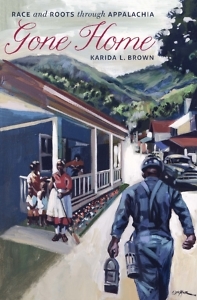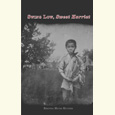Black in Appalachia
Karida Brown explores the way ideas of home have shaped an oft-overlooked population
Gone Home: Race and Roots through Appalachia, Karida L. Brown’s lyrical consideration of African Americans in the coal-mining towns of Harlan County, Kentucky, offers a needed antidote to the dominant national belief that Appalachia is populated exclusively by poor white people. Brown tells the story of how Harlan County, a “waystation” in the Great Migration from the South to points North and West, became a home to black people and remains a psychic home today, even after the coal towns there fell into ruin.

Gone Home is not an idiosyncratic look at an obscure people in an isolated place. Instead, it focuses on epochal changes in the nation during the twentieth century: the rise and fall of Jim Crow, the movement of black people from the South, and the transition from industrial to postindustrial America.
The book’s structure is refreshingly unique: Brown conducted more than 150 interviews with black people who lived in Harlan County during the boom years of the coal industry, and she often allows her subjects to speak for themselves. An explanation of concepts or contexts often frames these passages, which appear sometimes as lyrical paragraphs of separate quotations from multiple people and sometimes as longer, uninterrupted comments from a single person. A formidable archive lies at the heart of Gone Home, and Brown borrows a number of concepts to unpack the archive, but her readings of W.E.B. DuBois’s ideas of African-American identity do the most work. It all fits together seamlessly, and the end result is a book that is very readable and conceptually interesting at the same time.
Gone Home expertly balances particularity of place with larger trends in the history of African Americans writ large. Black people in Harlan County suffered the same trials that countless African Americans suffered under Jim Crow and through the Great Migration, but the experiences of black Appalachians were inflected in unique, coal-country ways.
 They lived in company towns, for example, where U.S. Steel or International Harvester controlled their daily existence. But they also enjoyed an approximation of equality because everyone’s father worked in the mines, where the necessities of hard and dangerous work could mean a rough brotherhood across the color line. Class distinctions sometimes appeared in institutions like schools, however, and African Americans in Harlan created the same parallel institutions, informal or otherwise, that sustained so many black communities under Jim Crow. But the isolation of these communities and the common work uniting them made their institutions even more closely knit.
They lived in company towns, for example, where U.S. Steel or International Harvester controlled their daily existence. But they also enjoyed an approximation of equality because everyone’s father worked in the mines, where the necessities of hard and dangerous work could mean a rough brotherhood across the color line. Class distinctions sometimes appeared in institutions like schools, however, and African Americans in Harlan created the same parallel institutions, informal or otherwise, that sustained so many black communities under Jim Crow. But the isolation of these communities and the common work uniting them made their institutions even more closely knit.
Some of the most moving stories in Gone Home derive from the complex feelings of dislocation and lost community identity occasioned by school desegregation. As the author neatly puts it, “it was not the actual act of integration that generated negative feelings, but the procedure by which the process was carried out.” Black educators, the carriers of uplift for these communities, often lost their jobs, and black students entered classrooms where white teachers didn’t care for them in the same way.
Desegregation coincided with the mechanization of the mines, and people began to move on to look for work. As Brown puts it, “The black community groomed them for…migration from childhood.” Fathers worked coal so their children never had to.
It’s stunning how short-lived these communities were—ephemeral, lasting only a few decades—but it’s also moving to learn how many people still consider these places home, the sites of memory. Scores of people return to Harlan each year for Memorial Day, and hundreds of others meet each year in different locations under the auspices of the Eastern Kentucky Social Club. It’s a nostalgia that might seem strange were it not for Karida L. Brown’s essential book.

Peter Kuryla is an associate professor of history at Belmont University in Nashville, where he teaches a variety of courses having to do with American culture and thought. He is also a regular blogger for the Society for U.S. Intellectual History (S-USIH).


